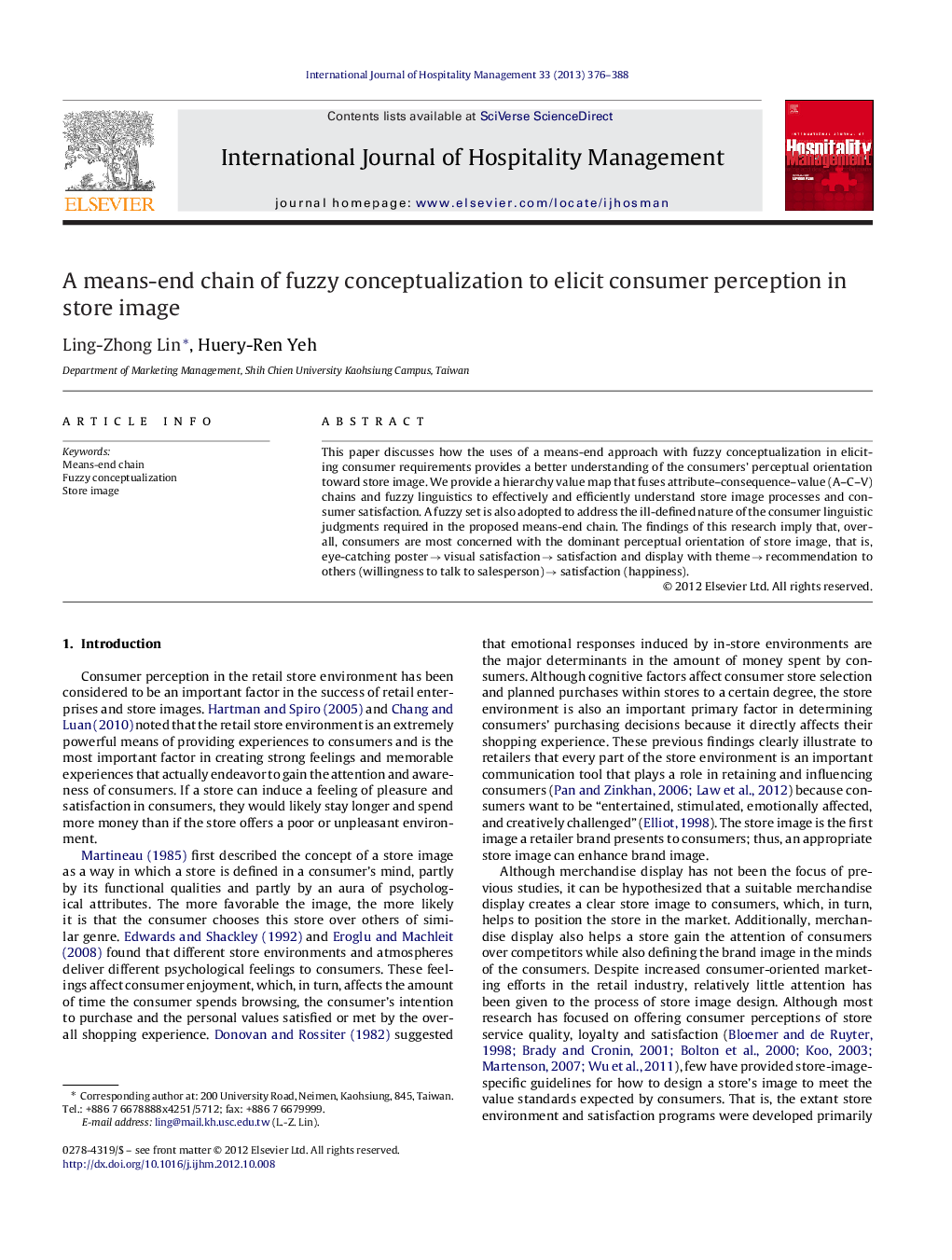| Article ID | Journal | Published Year | Pages | File Type |
|---|---|---|---|---|
| 1009618 | International Journal of Hospitality Management | 2013 | 13 Pages |
This paper discusses how the uses of a means-end approach with fuzzy conceptualization in eliciting consumer requirements provides a better understanding of the consumers’ perceptual orientation toward store image. We provide a hierarchy value map that fuses attribute–consequence–value (A–C–V) chains and fuzzy linguistics to effectively and efficiently understand store image processes and consumer satisfaction. A fuzzy set is also adopted to address the ill-defined nature of the consumer linguistic judgments required in the proposed means-end chain. The findings of this research imply that, overall, consumers are most concerned with the dominant perceptual orientation of store image, that is, eye-catching poster → visual satisfaction → satisfaction and display with theme → recommendation to others (willingness to talk to salesperson) → satisfaction (happiness).
► We provide a hierarchy value map and fuzzy linguistics on store image. ► Five values were be used in the hierarchy value map. ► The perceptual orientation: Eye-catching poster → Visual satisfaction → Satisfaction. ► A–C–V model: fashion, appropriate, and enthusiasm led to the value of feeling image.
